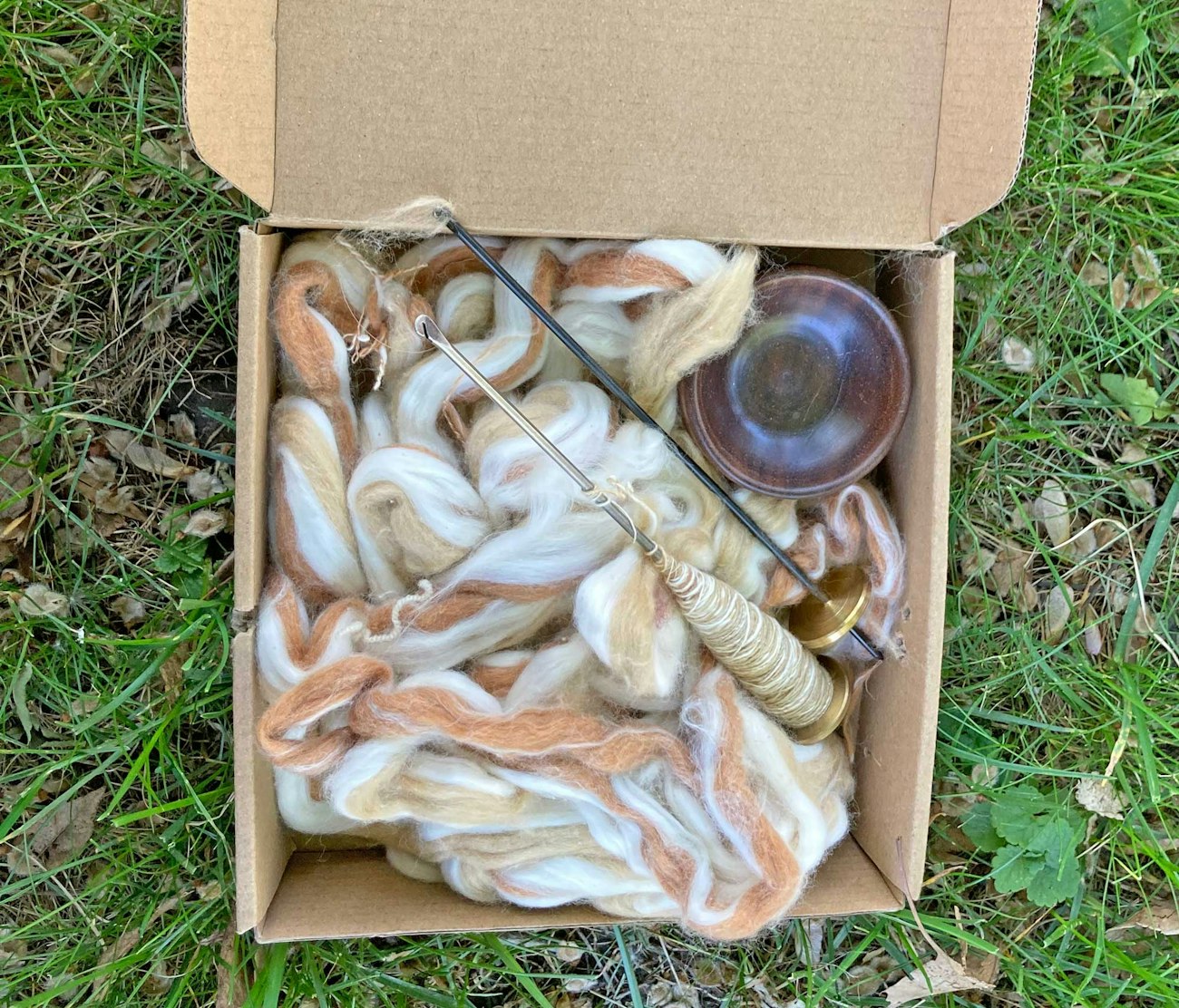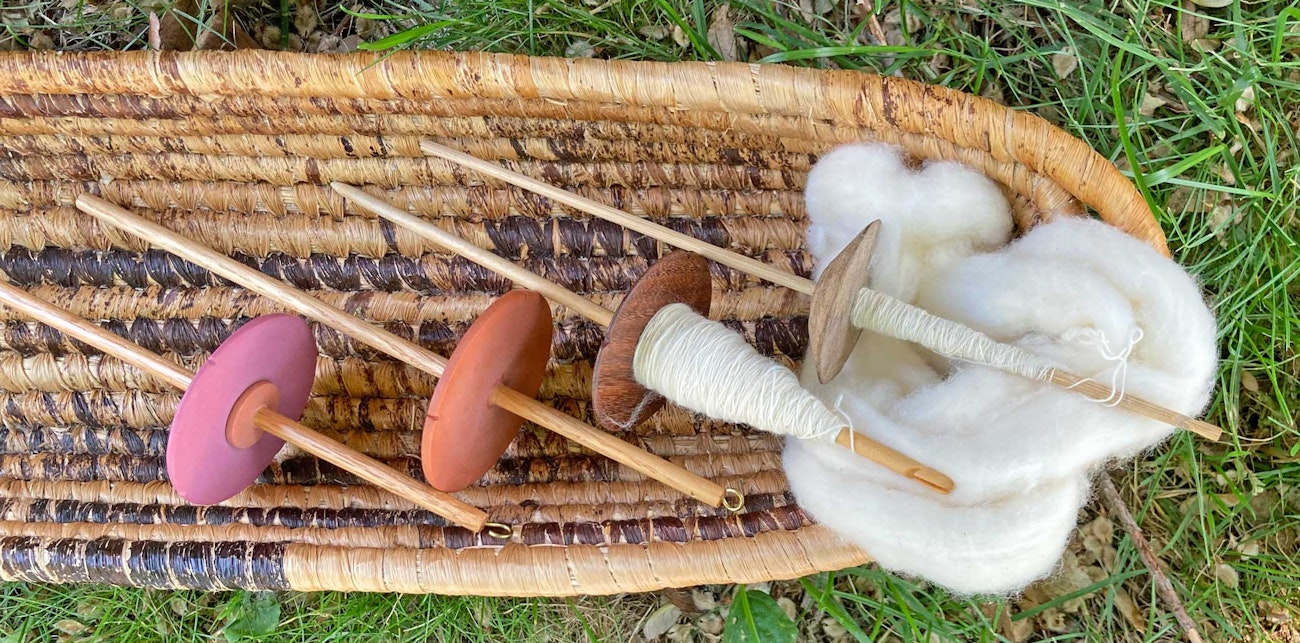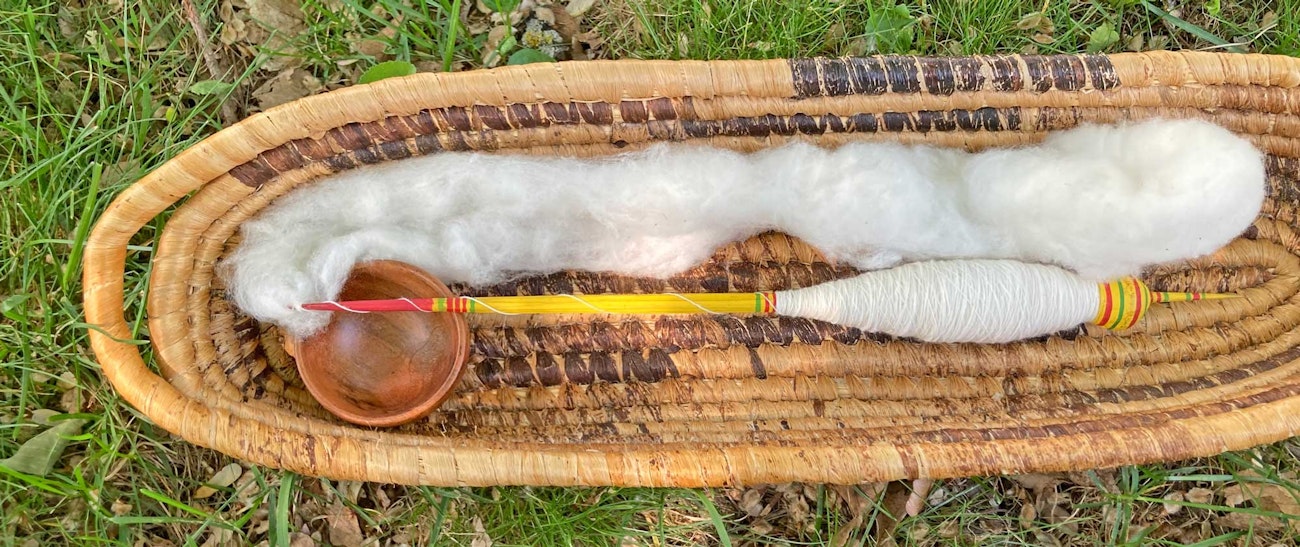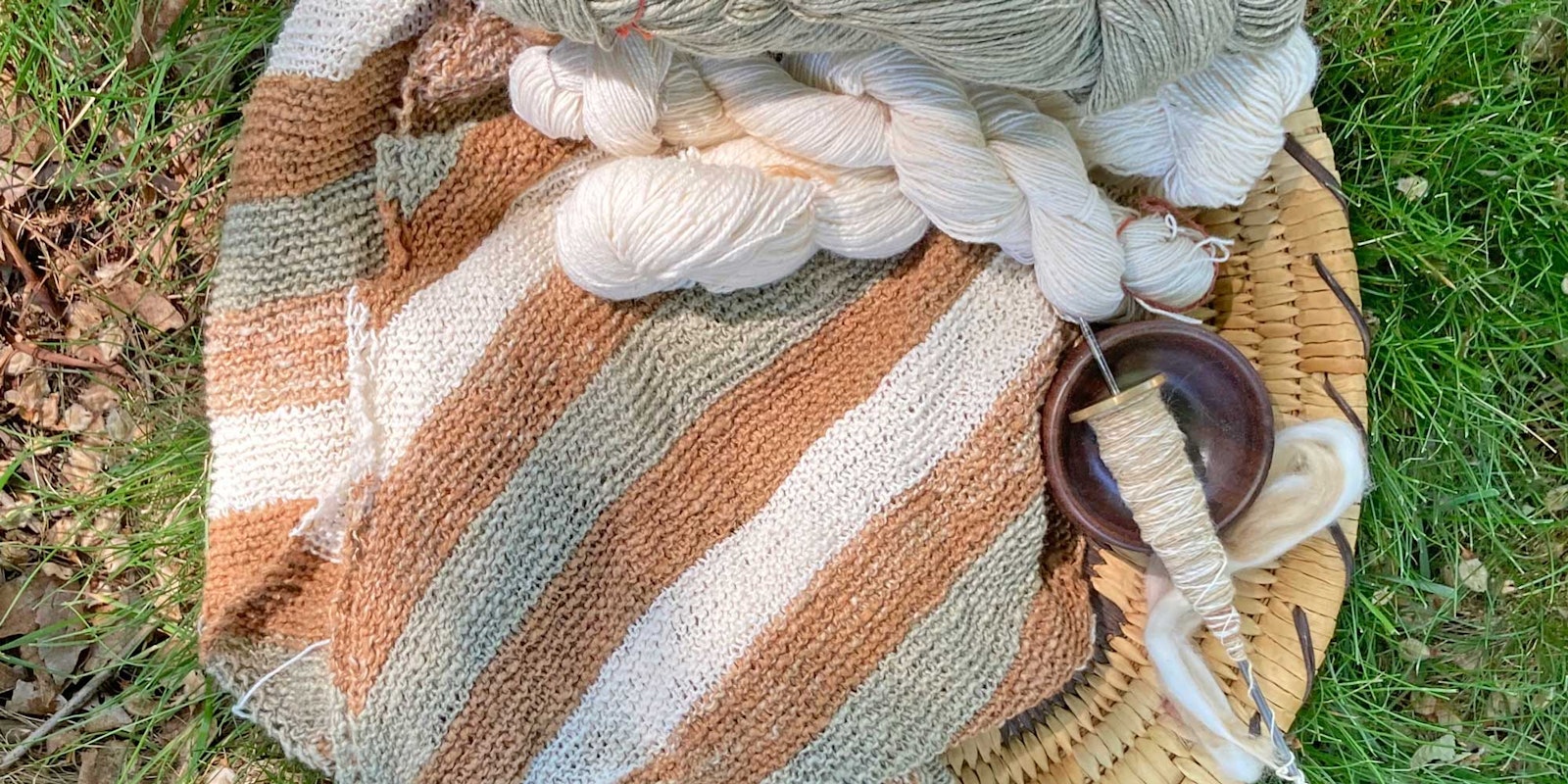I love spinning cotton, and as a devoted spindle spinner, I have always spun cotton on spindles, on the charkha, and on wheel. Over the years, I have narrowed down my spindle choices for cotton to a couple of bottom-whorl supported spindle varieties, and one semi-supported mid-whorl.
The first spindle I used with cotton was a traditional Indian takli spindle. My brass takli has a hook on the shaft and a heavy whorl that spins rapidly, inserting a huge amount of twist. I use the takli with a support spinning bowl and spin all sorts of cotton preparations on it: spinning off the seed, handcarded punis, commercial sliver, and imported punis from India.
 A small box can hold all you need for hours of cotton spinning: two takli spindles, a small support bowl, and cotton sliver.
A small box can hold all you need for hours of cotton spinning: two takli spindles, a small support bowl, and cotton sliver.
The Many Advantages of Taklis
During the pandemic, a takli sat on my desk at home, and I would spin during meetings. I tend to listen better when my hands are busy. I ginned cotton bolls by hand, carded the lint, rolled the punis around a knitting needle, and spun my singles. For all my spindle-spun cotton destined for plying, I first wind my singles into plying balls and then use a top-whorl spindle to add plenty of plying twist. My pandemic desk spinning yielded enough yarn to knit a small scarf that shows off the natural colors of the cotton, and I have several small skeins of various colors remaining. I’ll add these to my stash to knit the next time I want to do a project that uses cotton.
This remains one of my favorite spindles to use with cotton, and I bring it with me when I want something small in my purse that will give me many hours of spinning time. I tuck two taklis and a spindle bowl into a shallow, 7-by-7-inch cardboard box and tuck sliver in around the rest of the space. This folds up to a small, secure package which can be thrown into my purse or computer bag, and can provide an even surface to spin on if I need to spin on my lap.
 Ahka-style spindles
Ahka-style spindles
Akha Spindles Make for Quick Work on the Go
For spinning cotton when I want to be mobile—while walking or during my commute—I will use an Akha spindle, a mid-whorl spindle that is used both supported and suspended during the spinning process. I own several Akha-style spindles: one from the Akha people in Southeast Asia; one that I purchased years ago, that was made by a woodworker, and that remains my favorite; and two made by a friend. I use all of them the same way, initially creating a small amount of yarn by spinning supported, turning the spindle in one hand while drafting back in the other just until the 10 or 12 inches of yarn is strong enough to hold weight. I then roll the end of the spindle down my thigh and let go to insert twist rapidly and draft as it is suspended. It is a fantastic way of rapidly spinning yarn while still being able to walk.
 Malacate spindle
Malacate spindle
I have also used bead or clay bottom-whorl supported spindles for spinning cotton, which are easy to make from a bamboo skewer and a large bead. I have not been using this style of spindle nearly as long as taklis or Akhas, but I’ve been happy to expand my spindle collection to include them. At the 2022 SOAR event, I was lucky enough to be able to purchase a malacate spindle from Pueblo fiber artist Louis García, and it has become my absolute favorite spindle for spinning cotton. This spindle was made in Mexico and has a shaft made of mangrove root and a clay whorl. This style is beautifully painted, and I have never found a bottom-whorl supported spindle that I find as satisfying to use for spinning cotton. The dense wood can take a fine point at either end, making them sharp and allowing them to spin fast and balanced. Unfortunately, they are increasingly rare and very hard to find.
I have spun cotton on suspended top-whorl spindles in the past, but I don’t use these to spin singles any longer. I find the experience less enjoyable than using a supported spindle, and if I want to be mobile I will reach for my Akha. I do use suspended top-whorl spindles for plying cotton yarns, as I like the speed I can get with a roll down the thigh.
Cotton is a favorite fiber of mine, and spindles are a fantastic way to spin it. Experiment and find the tools that work best for you!
Resources
“Meet the Makers of the Traditional Oaxacan Hand Spindle,” ClothRoads.com.
Devin Helmen has been immersed in fiber since learning to spin at age eight. They spin, knit, and weave in beautiful Minnesota. Devin enjoys writing and teaching about fiber arts and has a passion for spindles and everyday textiles. They blog, intermittently, at afewgreenfigs.blogspot.com.

